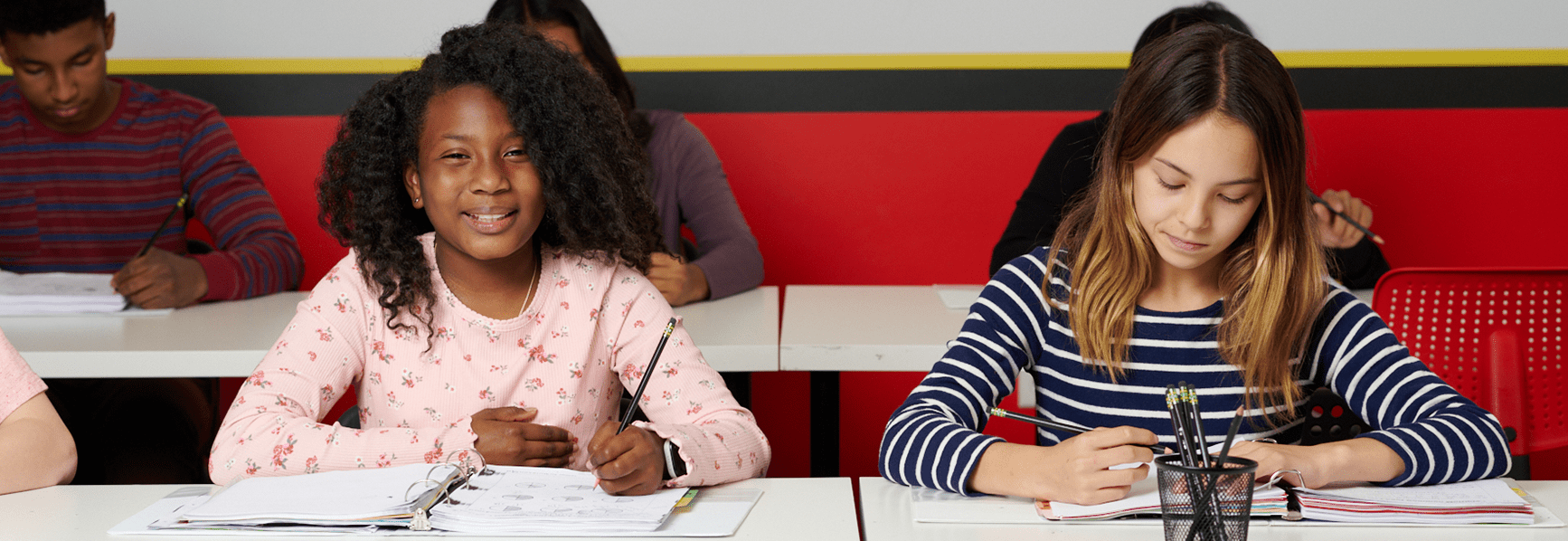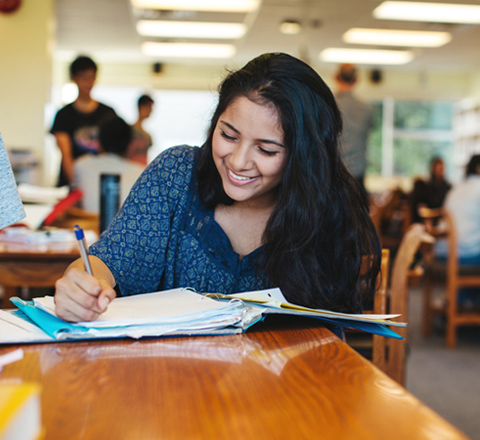How online algebra 2 programs enhance your comprehension of complex numbers
Wiki Article
The Comprehensive Coverage of Algebra 2 Tutoring: Trick Ideas and Skills for Proficiency
Algebra 2 tutoring uses a wide range of important principles and abilities required for trainees to attain mastery in mathematics. This includes a comprehensive understanding of polynomial functions, complex numbers, and logarithmic equations, amongst others. Each subject improves the previous one, creating a cohesive framework for analytical. The application of these principles in real-world circumstances highlights their importance. There continue to be critical areas that can further enhance a student's mathematical journey.Understanding Polynomial Functions
How do polynomial functions form the landscape of algebra? These fundamental expressions, containing variables elevated to non-negative integer powers, function as the foundation of several algebraic principles. They can be identified by their level, which shows the highest possible power of the variable, and their coefficients, which figure out the feature's actions. Polynomial features show distinctive residential or commercial properties, such as continuity and smoothness, allowing them to design a selection of real-world circumstances. Their visual depictions feature curves that can demonstrate numerous actions, consisting of intercepts and turning points. Understanding polynomial features entails grasping operations such as addition, multiplication, department, and reduction, as well as factoring strategies. This fundamental understanding is important for solving inequalities and formulas. By grasping polynomial features, trainees develop essential analytical skills and obtain insight into more complicated mathematical concepts, leading the way for innovative research studies in algebra and past.Grasping Complex Numbers

Definition and Properties
Complex numbers, a keystone of innovative algebra, extend the principle of one-dimensional number lines to a two-dimensional aircraft. Specified as varieties of the kind (a + bi ), where (a) and (b) are actual numbers and (i) represents the imaginary unit with the residential property (i ^ 2 = -1 ), these numbers possess one-of-a-kind residential properties. The real part (a) shows the horizontal axis, while the fictional component (b) indicates the vertical axis in the facility plane. Secret residential or commercial properties include their capability to stand for services to polynomial formulas that do not have real options and their closure under addition, department, reduction, and multiplication (other than by absolutely no) This framework enables a deeper understanding of mathematical ideas and applications throughout numerous areas.Operations With Complicated Numbers
Workflow with intricate numbers create an important element of algebra that improves mathematical understanding and analytic capacities. Complex numbers, expressed in the form (a + bi), where (a) and (b) are genuine numbers, need certain operations like addition, department, reduction, and reproduction.Enhancement and subtraction include integrating like terms, while multiplication utilizes the distributive residential or commercial property and the truth that (i ^ 2 = -1) Division of complex numbers requires multiplying the numerator and by the conjugate to get rid of the fictional component in the common denominator. advanced algebra.
These procedures not just strengthen foundational algebra skills but additionally prepare pupils for more sophisticated topics, such as quadratic functions and polynomial formulas. Proficiency of complicated number operations outfits students with important analytical tools.
Discovering Logarithmic Formulas
In the research study of logarithmic equations, recognizing the residential or commercial properties of logarithms is important for effective analytic. These residential properties offer the foundational devices needed to adjust and streamline logarithmic expressions. By mastering these principles, trainees can confidently tackle a selection of logarithmic equations.Recognizing Logarithm Features
Logarithm residential or commercial properties play a necessary role in streamlining and resolving logarithmic formulas, using a methodical strategy to comprehending their behavior. These properties include the power, item, and ratio rules. The product regulation states that the logarithm of an item is the amount of the logarithms of its elements. On the other hand, the ratio guideline shows that the logarithm of a ratio is the difference of the logarithms. The power policy discloses that the logarithm of a number raised to a backer can be shared as the exponent multiplied by the logarithm of the base. Proficiency of these residential or commercial properties boosts one's ability to manipulate logarithmic expressions, supplying a structure for tackling a lot more intricate formulas and functions experienced in innovative algebra.Solving Logarithmic Equations
Exactly how can one properly solve logarithmic equations? To take on these formulas, it is essential to make use of residential or commercial properties of logarithms. First, one must settle logarithmic expressions utilizing the power, product, and quotient guidelines. This simplification frequently transforms the equation into a more workable kind. Next off, converting logarithmic equations to their exponential type can disclose the unknown variable. The formula (log_b(x) = y) equates to (x = b ^ y ) Furthermore, inspecting remedies is important to ensure they do not produce supplementary results, particularly when dealing with logarithms. By methodically using these methods, individuals can with confidence browse and resolve logarithmic equations, boosting their general understanding and mastery of this mathematical principle.Assessing Sequences and Series
Although series and series may originally appear complex, they are basic ideas in algebra that reveal patterns and partnerships within numbers. A sequence is a checklist of numbers set up in a particular order, usually specified by a formula or guideline. Recognizing the kinds of series, such as arithmetic and geometric series, enables pupils to determine the underlying patterns efficiently.On the various other hand, a series is the amount of the terms of a sequence. Assessing series entails recognizing limited and infinite series, along with calculating their amounts when relevant. Students discover important methods, such as making use of formulas for the sum of math and geometric collection, which improve estimations.
Mastering sequences and collection outfits students with necessary problem-solving skills, allowing them to take on much more complicated mathematical principles. This foundation is vital for their continued success in algebra and higher-level maths.
Solving Sensible Expressions and Formulas

When resolving reasonable formulas, view website one must isolate the variable, commonly by cross-multiplying to eliminate the fractions. It is essential to examine for nonessential options, as increasing both sides can present values that do not satisfy the original equation. Furthermore, pupils must be aware of limitations on the variable, as specific worths can make the absolutely no, rendering the expression undefined.
Understanding Conic Sections
Conic sections are geometric numbers originated from the junction of an aircraft and a dual cone. These areas include circles, ellipses, parabolas, and hyperbolas, each differentiated by distinct residential properties and formulas. Comprehending conic sections is essential for students as they discover the partnerships in between algebra and geometry.
Circles are defined by a continuous distance from a facility factor, while ellipses result from a plane reducing via both cones, developing a closed curve. Parabolas arise from an aircraft alongside the axis of the cone, showing a U-shaped chart. Hyperbolas, on the other hand, occur when the plane cuts in half both intersects of the cone, bring about two unique, open curves.
In Algebra 2, mastering conic sections entails identifying their common equations, graphing them precisely, and determining their essential functions, such as vertices, axes, and foci. This fundamental knowledge prepares students for more advanced mathematical concepts.
Using Features and Charts
Charts and features serve as basic tools in Algebra 2, making it possible for students to model partnerships in between variables and picture mathematical principles. Mastery of these aspects enables students to analyze data, recognize fads, and make predictions based upon established patterns. check this site out Students check out different types of features, consisting of linear, quadratic, polynomial, sensible, and exponential, each with distinctive qualities and applications.Graphing these features involves understanding key features such as inclines, intercepts, and asymptotes, which offer understandings into their behavior. Additionally, students find out to change features with representations, stretches, and changes, boosting their capability to control and analyze graphical depictions.
Using features in real-world contexts even more solidifies understanding, as students tackle issues entailing profit margins, population growth, and physics equations. This functional application bridges academic understanding with concrete outcomes, fostering a much deeper gratitude for the relevance of features and graphs in day-to-day life.
Frequently Asked Concerns
How Can I Boost My Problem-Solving Abilities in Algebra 2?
To improve analytical skills in Algebra 2, one need to exercise routinely, seek varied troubles, make use of on-line sources, collaborate with peers, and concentrate on understanding underlying concepts instead than remembering procedures, cultivating much deeper understanding and application.What Resources Are Advised for Added Algebra 2 Practice?
Advised sources for added Algebra 2 practice consist of online systems like Khan Academy, textbooks with method issues, and tutoring services. Participating in mathematics forums can additionally supply varied analytic techniques and joint knowing opportunities.Exist Online Tutoring Options Available for Algebra 2?
Yes, numerous online tutoring alternatives exist for Algebra 2 (advanced algebra). Systems like Khan Academy, Chegg Tutors, and Wyzant deal individualized assistance, video clip lessons, and interactive workouts, satisfying various learning styles and timetables for pupils seeking supportJust how Do I Plan for Algebra 2 Examinations Effectively?
To prepare effectively for Algebra 2 tests, one ought to assess essential principles, technique troubles frequently, utilize on-line resources, develop study hall, and take practice examinations to identify toughness and weaknesses for targeted improvement.
What Are Common Misunderstandings Pupils Have in Algebra 2?
Students frequently misconstrue the relevance of foundational ideas, believing they can skip prerequisites. They may additionally have problem with abstract thinking, puzzling functions with formulas, and misunderstanding the function of variables in algebraic expressions.Mastering intricate numbers is important for pupils in Algebra 2, as these numbers expand the real number system to solve equations that do not have genuine options. These operations not just enhance fundamental algebra abilities but also prepare trainees for more advanced topics, such as square features and polynomial equations. Reasonable expressions and equations stand for important components of algebra, entailing fractions where the numerator and common denominator are polynomials. In Algebra 2, grasping conic areas entails acknowledging their common equations, graphing them properly, and determining their essential functions, such as vertices, axes, and foci. Using functions in real-world contexts further solidifies understanding, as pupils deal with troubles entailing profit margins, population growth, and physics formulas.
Report this wiki page